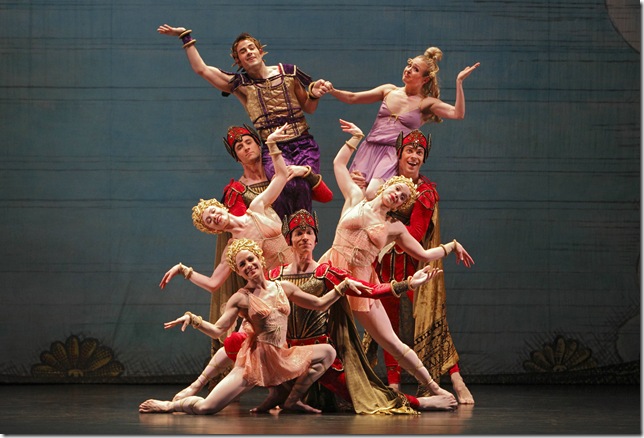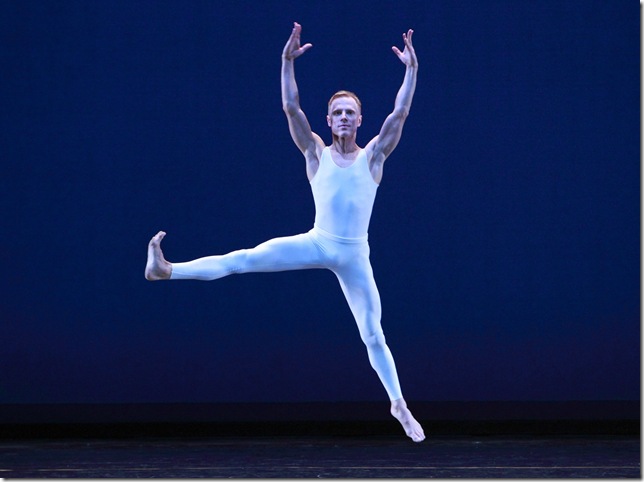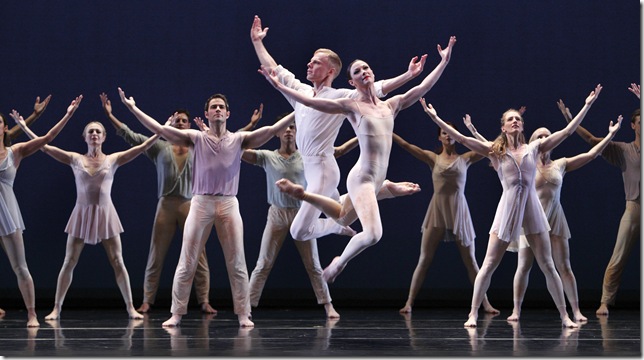By Tara Mitton Catao
It was only a short 13 months ago that the Paul Taylor Dance Company was here at the Duncan Theatre performing the iconic modern dance choreographer’s trademark athletic dances.
They were revving up for a major season in New York at Lincoln Center’s David H. Koch Theater. During the three-week season, a vast variety of programs were to showcase Taylor’s astonishing creative output over the last 60-plus years, which included two new works that Taylor had just created for his dancers.
Now, mind you, Taylor was 84 at the time, and you might think that was quite astonishing for someone his age. But Taylor is no slouch and is clearly not ready to sit back and rest on his laurels. He aced the Lincoln Center season with record audiences and will be returning again this March with not only another two new works but also with a whole new everything.
There is a new name — Paul Taylor’s American Modern Dance — a new mission, new funding and a brand new website promoting this whole new concept. Disturbed by the demise of The Merce Cunningham Dance Company after his colleague’s death, Taylor did some forward thinking. Armed with the proceeds from the sale of some of his own Robert Rauschenberg paintings, together with a matching grant, he forged a completely revamped organization that will “present and curate great modern dances of the past and present (them) alongside his own works …and commission a new generation of choreographers so that modern dance will flourish long into the future.”
Friday night’s performance at the Duncan may well be one of the last billed simply as the Paul Taylor Dance Company, and the dancers gave a personable and energized showing in a program that spanned Taylor’s long and illustrious choreographic career.
The evening began with Aureole, which was choreographed in 1962 and was one of Taylor’s first major successes with the public. It is a plotless, lyrical work for five dancers dressed in white set to five melodic excerpts from Handel’s concerti grossi and his oratorio Jephtha.
The work is warm and inviting in its utter simplicity and has definitely endured the test of time. Choreographed after Taylor shocked the dance world in 1957 with his 7 New Dances, where in one work, he and his partner didn’t move at all for 4 minutes. In a famous response to this performance, Taylor received a dance review in the newspaper which only listed the name of the event and place leaving the entire column completely blank. But renegade that he is, Taylor turned around and stunned the dance world again with Aureole, which was filled with movement and choreographed to Handel.
Aureole is now credited to be the work that broke the barrier between modern dance and ballet. It was the first modern dance work to be picked up by numerous ballet companies, proving that modern works (especially Taylor works) are a great addition to the repertory of ballet companies the world over.
On Friday night, the centerpiece of the work (not to mention of the company dancers) was Michael Trusnovec performing the difficult adagio that Taylor choreographed for himself. Dressed in simple white tights and moving from one shape to another balanced primarily on one leg (Taylor said he choreographed the solo on one leg as his other leg was often injured), bare-chested and handsome Trusnovec was the epitome of beauty in a male dancer. Trusnovec was elegant, pure and masterful in his ability to nuance his quality changes, almost creating an aureole around his own body.
One wondered if Taylor had a little fun with the dates of this weekend’s show when selecting the repertory works to be performed. Big Bertha, first performed in 1970, was a bizarre tale of horrors befitting a Friday the 13th performance while Troilus and Cressida (reduced) was a little silly bit of a romantic escapade complete with three golden-lock cupids which reminded us that Saturday was the little-bit-silly observance of Valentine’s Day.
Taylor, well-known for his powerful movement style, is equally well-known for taking on controversial social issues. In 1970, no one was acknowledging that disturbing issues like incest existed, but Taylor took it head-on. In Big Bertha (music from the St. Louis Melody Museum collection of band machines) he developed the theme as a mother, father and daughter visited a carnival and delighted in putting a coin in the slot and watching the mechanical doll of Big Bertha spring to life.
The cast gave strong theatrical interpretations as things uncomfortably deteriorated under the convincing evil power of Christina Lynch Markham as Big Bertha as she claimed and controlled the family’s behavior. Sean Mahoney gave a rich, convincing and conflicted performance as the father, showing that the rawness of the theme of incest is still as disturbing today.
In juxtaposition, Troilus and Cressida (reduced) had a vaudevillian feel that looked like an old-fashioned, pop-up valentine card. It was a brief love caper (with music by Ponchielli) that ended with the Greek invaders, the villains, kicking their legs high together in a can-can step with arms interlaced, the lovers reunited and the cupids delighted.
Due to an injury, the final piece on the program was changed to Beloved Renegade, a somber and — for Taylor — almost stark piece that drew its inspiration from Walt Whitman’s Leaves of Grass. Whitman worked on this collection throughout his lifetime increasing the number of poems from 12 to more than 400. The initial reception to Whitman’s work was shock; it was viewed as highly indecent by many and therefore was highly controversial. There were numerous attempts to ban and censure Leaves of Grass.
Using a cast of 15 dancers in six segments, each titled with different Whitman verses, Beloved Renegade (set to music by Poulenc) highlighted a lead character (was he Whitman or was he Taylor?) following his path — the inevitable path that all lives will follow — toward death. Danced poignantly and with clarity by Trusnovec, he was both guarded and guided along his way by a female figure, a type of angel, danced with great beauty and gentle strength by Laura Halzack. The final image was luminous as the figures of the ensemble faded and disappeared into the background and the archetypal figure of the woman stood on one leg hovering over the lifeless body of the poet/ the artist.
Maybe Taylor appropriately chose to end this program with Beloved Renegade because this may well have been one of the last performances of the Paul Taylor Dance Company as we know it. Sad? Maybe. But, on the other hand, now we can look forward to seeing Paul Taylor’s American Modern Dance, the newest creation of one of modern dance’s greatest artists.



